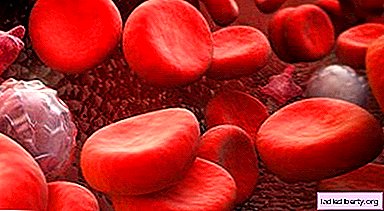
Hemophilia they call a hereditary disease characterized by a lack of coagulation factors, in which the process of blood coagulation slows down and the bleeding time increases. More often hemophilia affects boys (except hemophilia C, which girls can also get sick with).
There are three types of hemophilia that differ by a coagulation factor that is absent in the blood:
- hemophilia A - is the most common, occurs when there is no coagulation factor VIII in the blood, which is represented by a special protein (anti-hemophilic globulin).
- hemophilia B (Christmas disease) - occurs with insufficient activity of the IX coagulation factor, or Christmas factor.
- hemophilia C is the most rare form, occurs with a lack of XI coagulation factor.
Carriers (conductors) of the hemophilia gene are women. Boys who are born to such a woman have a 50% chance of getting this disease. The carriers themselves, as a rule, have no signs of hemophilia.
Hemophilia - the causes of the disease
Blood coagulation (hemostasis) is an important protective reaction of the body, which is activated by vascular damage and bleeding. It is provided by special substances called coagulation factors, as well as small blood cells, or platelets. Successful completion of the coagulation process and stopping bleeding is possible only if all coagulation factors are present, as well as a sufficient number of platelets. With a deficiency of certain coagulation factors, timely hemostasis becomes impossible, that is, hemophilia occurs.
Hemophilia - symptoms of the disease
Hemophilia is manifested mainly by the following symptoms:
- prolonged bleeding that begins immediately or within a few hours after receiving an injury, tooth extraction, or spontaneously;
- the appearance of large bruises (hematomas) after minor injuries;
- frequent nosebleeds;
- intraarticular bleeding (hemarthrosis), which is a serious complication of hemophilia, characterized by the ingress of blood into the joint and severe pain, swelling of the joint and impaired mobility.
- the presence of blood in the feces and in the urine.
Hemophilia - diagnosis of the disease
All three types of hemophilia are characterized by the same symptoms, therefore, one or another type of disease can be diagnosed only through laboratory tests.
Hemophilia - treatment and prevention
For treatment, it is very important to know the type of hemophilia. As a rule, it is based on intravenous administration of a factor which is in short supply in a patient. As a result of treatment, bleeding can be prevented or its consequences can be prevented without disability.
Since hemophilia causes the appearance of hemorrhage with intramuscular and subcutaneous injections, it is recommended to inject drugs intravenously or take orally. The diet of patients should include foods containing vitamins A, B, C, D, salts of phosphorus and calcium. With uncomplicated hemorrhages, it is necessary to provide the patient with complete rest, cold. To immobilize a diseased joint, a plaster cast is used for 3-4 days, further treatment is carried out using UHF.
Among the preventive measures, an important place is occupied by the genetic counseling of the married couple. A patient with hemophilia and a female conductor of hemophilia, as well as a healthy man and woman conductor, are not recommended to have children. When a healthy woman is pregnant from a patient with hemophilia from the 14th to the 16th week of pregnancy, the fetal sex is determined using the method of transabdominal amniocentesis. If he shows that the unborn child is a girl, then mothers are advised to terminate the pregnancy because of the danger of the spread of hemophilia through the female conductor. A female conductor can be identified by determining factors VIII or IX in their blood using a quantitative biochemical method.
Comments











